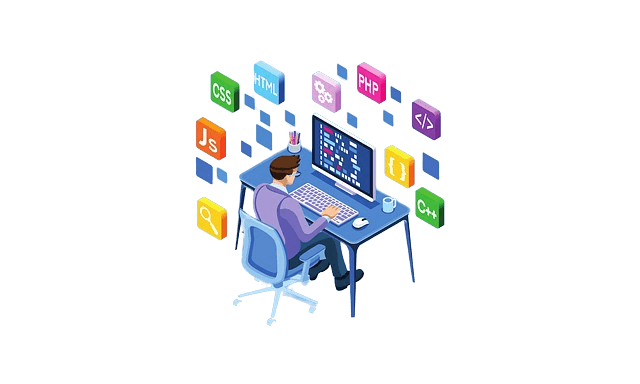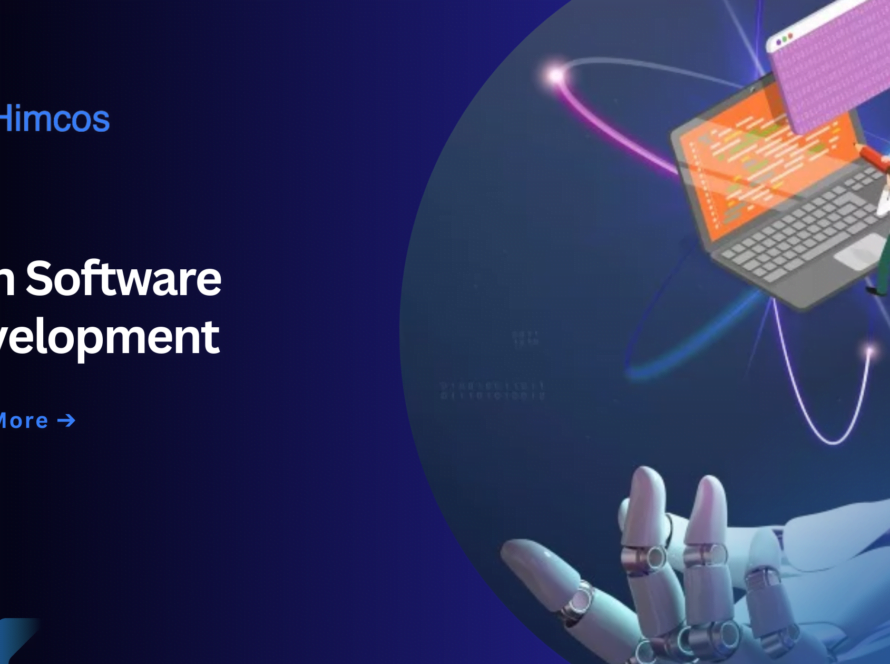Many businesses opt for ‘off-the-shelf’ software because of its convenience. A few quick Google searches, and it’s ready to use. However, if investing in software is on your agenda, bespoke software development is the route to consider. Although bespoke software development may require more time and cost than a ready-made solution, the outcomes are exceptional. This blog breaks down each phase of the bespoke software development process and highlights why a tailored solution offers greater benefits to your business compared to an off-the-shelf alternative.
Table of Contents
What is Bespoke Software Development?
Bespoke software development is the process of creating customized software tailored to meet the specific needs of a business or individual, rather than using off-the-shelf software solutions. Unlike standard software, bespoke software is designed from scratch to align with unique goals, workflows and requirements. This custom approach allows companies to have software that fits perfectly with their operations, often improving efficiency and productivity. Whether it’s for managing complex tasks, enhancing customer experience, or streamlining processes, bespoke software is adaptable and flexible, offering a personalized solution that grows easily with the business over time.
What is the Software Development Process?
The bespoke software development process involves a series of steps aimed at creating custom software that meets specific business needs. It typically starts with understanding the client’s requirements and creating a plan. This is followed by designing, developing, testing, and refining the software until it’s ready for use. Each step is carefully managed to ensure the software aligns with the business’s goals, budget, and timeline. By following this structured process, developers create a high-quality, reliable product tailored precisely to the client’s needs, offering flexibility and long-term scalability.

Software Development Process Roadmap
Outlined below are the most needed stages that Himcos follows to execute application development projects. As per my experience, depending on project requirements, some steps may be omitted, such as when developing an MVP. Various development methodologies (e.g., Scrum, Kanban, Waterfall, V-model, agile) may approach these steps differently to perform them either iteratively, in parallel or sequentially.
1. Define Software Requirements
This step begins by assessing the business needs of the organisation and understanding the target users’ expectations. It involves analyzing the competition to identify their strengths and weaknesses, defining compliance requirements based on industry and region. A detailed software requirements specification is created, proposing a set of prioritized features to enhance user value. Potential risks that might hinder a smooth launch are also identified, and effective mitigation strategies are proposed. For companies developing software products, we help choose an optimal market niche, define product differentiation, and craft a unique value proposition, along with expert guidance on profitable monetization strategies, and customer acquisition, conversion, and retention strategies.
2. Develop a Project Plan
This step starts with high-level software design, which includes defining the app type (mobile, web, or desktop), identifying functional modules, advanced capabilities like AI/ML or IoT, outlining how these modules interact, and mapping data flows. A precise project scope, including KPIs and deliverables, is defined, and a project timeline with key milestones and a work breakdown structure is developed. The team is composed, and collaborative workflows are planned to ensure smooth coordination. Accurate estimates for time and cost are provided, and a business case is created by performing a cost-benefit analysis, ROI, and NPV calculations. For complex or innovative solutions, we may develop a proof of concept to validate technical viability, which helps confidently progress to detailed design while reusing created components to expedite development.
3. Design UX & UI
UX research is conducted to understand how users will interact with the software, and initial wireframes are created to showcase basic functions and layout on each screen. This step also involves designing a visually appealing user interface and compiling a UI kit. Wireframes are combined into dynamic UX prototypes and transformed into full-colour UI mock-ups, which undergo user testing to validate design choices. Investing in unique UI design is recommended if the solution’s visual style is a competitive advantage; otherwise, focusing on functionality and using default themes is a more practical approach.
4. Architect the Software
Architecting the software involves defining how each functional module will operate at the code level, designing a secure and scalable architecture, and deciding on the integration approaches that will enable smooth component interactions. An optimal technology stack is chosen to match the software’s needs. Himcos leverages cloud services from established providers such as Microsoft, Amazon, and Google to streamline delivery and maintenance. These cloud platforms provide convenient managed services, flexible pay-as-you-go models, and numerous ready-to-use components (such as messaging, data science, IoT), allowing us to create software faster and optimize project investments.

5. Develop the Code
The coding process begins by setting up development, testing, and delivery automation environments like CI/CD and container orchestration. Server-side code and APIs are written, while static UI mock-ups are developed into a fully functional GUI. Data storage is configured to support the software’s needs, and in cases where AI is incorporated, models are developed, trained, and fine-tuned. Thorough documentation is maintained throughout the coding and development processes. Development starts with an MVP, allowing for early feedback and quick payback; the software is then rapidly evolved incrementally, based on frequent user feedback to enhance the solution continually.
6. Integrate Systems
This step involves setting up secure integrations between the software and required systems including corporate applications such as CRM, ERP or accounting solutions, external data sources necessary for operations, such as traffic data for logistics platforms or capital market data feeds for investment tools; third-party services for authentication, payment, messaging; and hardware integrations, including personal devices, tracking tools, or industrial robots.
7. Perform Rigorous Testing
A test plan is developed covering the testing scope, various types, and reporting processes. Test cases and checklists are designed, and automated test scripts for API and UI are created and run. Testing starts with unit tests and static code analysis conducted in parallel with development. This phase includes functional, performance, security, and integration testing, and any detected bugs are resolved. Engaging QA specialists at the requirements stage ensures that all specifications are testable, which helps ensure comprehensive testing and avoid costly rework.
8. Launch the Solution
Once the software is ready, it is deployed in the production environment. This includes conducting user training sessions, which are either delivered onsite, remotely or as a hybrid. Ongoing software performance monitoring is set up, and any bugs reported by users are promptly addressed. Plans for future improvements and new features are made based on user feedback, business needs, and emerging market trends to ensure the software remains competitive and valuable over time.
The Team Behind Building Profitable Web Products
An experienced software development company plays a vital role in ensuring a project’s success. Here’s an overview of the essential roles in Himcos development team.
A Project Manager (PM) oversees the agile development process from beginning to end, managing each phase of the software development life cycle. The PM’s primary goal is to achieve the client’s objectives, directly influencing the workflow’s efficiency and smoothness. Our UX/UI experts design custom interfaces to create an enhanced user experience. They set your platform apart by refining its look, feel and usability. The Technical Lead guides the development’s technical direction, ensuring the accuracy of technical solutions and suggesting improvements. This role also focuses on building the technical skills within the team. Developers turn ideas into functional technology, concentrating on design, requirements, and assigned tasks.
The software development process generally has two key aspects: frontend and backend. Accordingly, the team consists of both frontend and backend developers.
a) Frontend developers focus on creating the software’s external, user-facing elements, aiming to build a user-friendly interface for interaction with the platform.
b) Backend developers, on the other hand, handle the internal and computational aspects, including database creation and integration, security, and backup configuration.

How does Himcos help?
We help Owner-led businesses having no in-house tech teams build better software. We create solutions that are designed just for you! Our tech teams are highly vetted and possess years of experience working on complex projects and meeting strict deadlines.
We mean delivering value with high quality. We’ve helped businesses large and small streamline their processes and achieve their goals through custom software development. We specialize in modern technologies like Node.js, React.js, TypeScript, Vue.js, MongoDB, and some more to build powerful, scalable, and efficient software. From initial consultation to ongoing support, Himcos with you every step of the way, ensuring you get maximum value from your investment.



